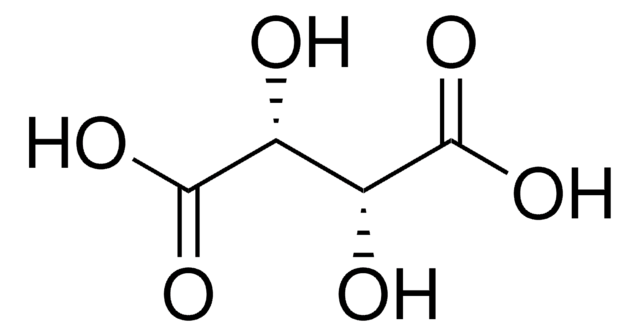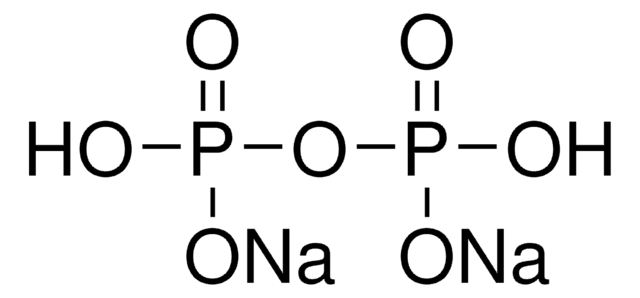T109
L-(+)-Tartaric acid
≥99.5%
Synonym(s):
(2R,3R)-(+)-Tartaric acid, L-Threaric acid
About This Item
Recommended Products
vapor density
5.18 (vs air)
Quality Level
assay
≥99.5%
form
granular
powder or crystals
optical activity
[α]20/D +13.5±0.5°, c = 10% in H2O
autoignition temp.
797 °F
mp
170-172 °C (lit.)
functional group
carboxylic acid
hydroxyl
SMILES string
O[C@H]([C@@H](O)C(O)=O)C(O)=O
InChI
1S/C4H6O6/c5-1(3(7)8)2(6)4(9)10/h1-2,5-6H,(H,7,8)(H,9,10)/t1-,2-/m1/s1
InChI key
FEWJPZIEWOKRBE-JCYAYHJZSA-N
Looking for similar products? Visit Product Comparison Guide
General description
Application
- A co-former for the synthesis of etravirine co-crystals.
- A mobile phase additive in thin-layer chromatography.
signalword
Danger
hcodes
Hazard Classifications
Eye Dam. 1
Storage Class
11 - Combustible Solids
wgk_germany
WGK 1
flash_point_f
302.0 °F - closed cup
flash_point_c
150 °C - closed cup
ppe
dust mask type N95 (US), Eyeshields, Gloves
Choose from one of the most recent versions:
Already Own This Product?
Find documentation for the products that you have recently purchased in the Document Library.
Customers Also Viewed
Our team of scientists has experience in all areas of research including Life Science, Material Science, Chemical Synthesis, Chromatography, Analytical and many others.
Contact Technical Service






